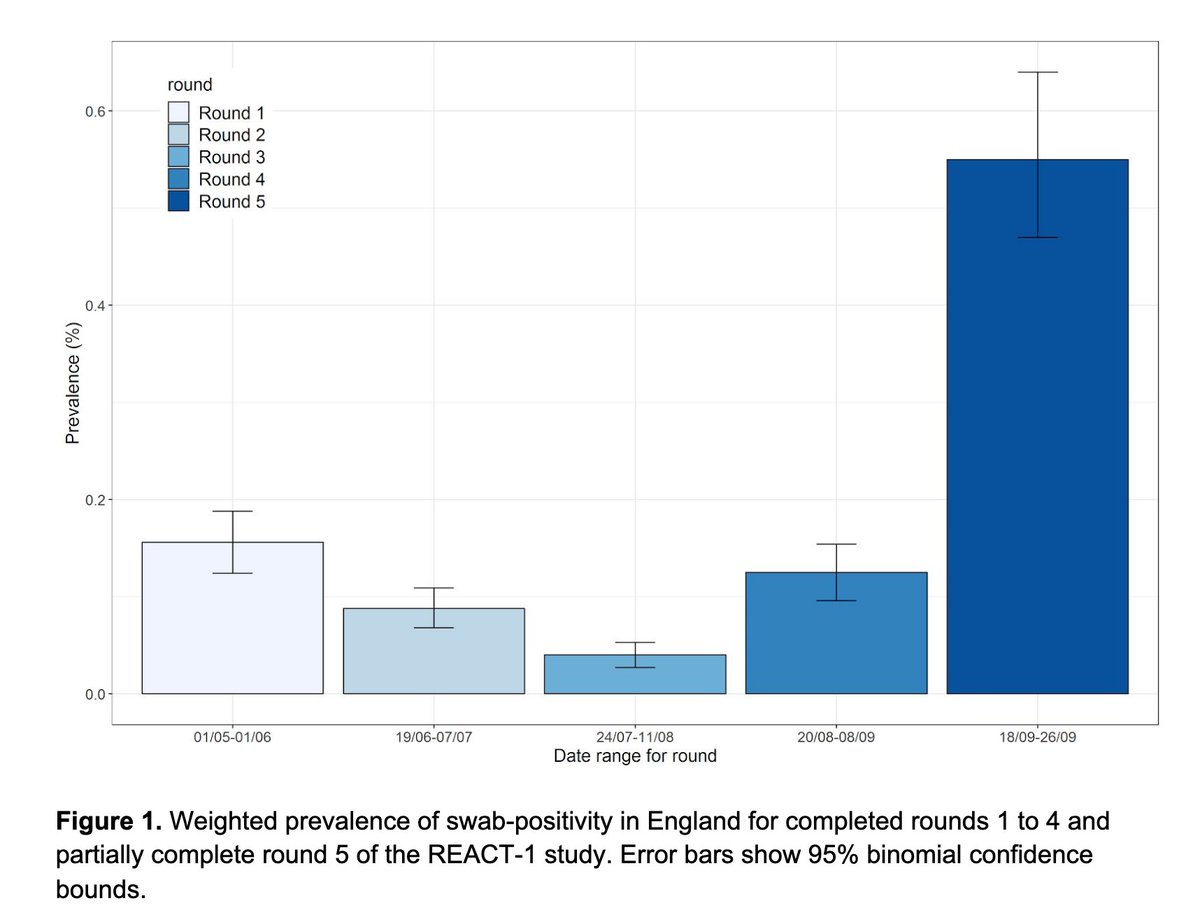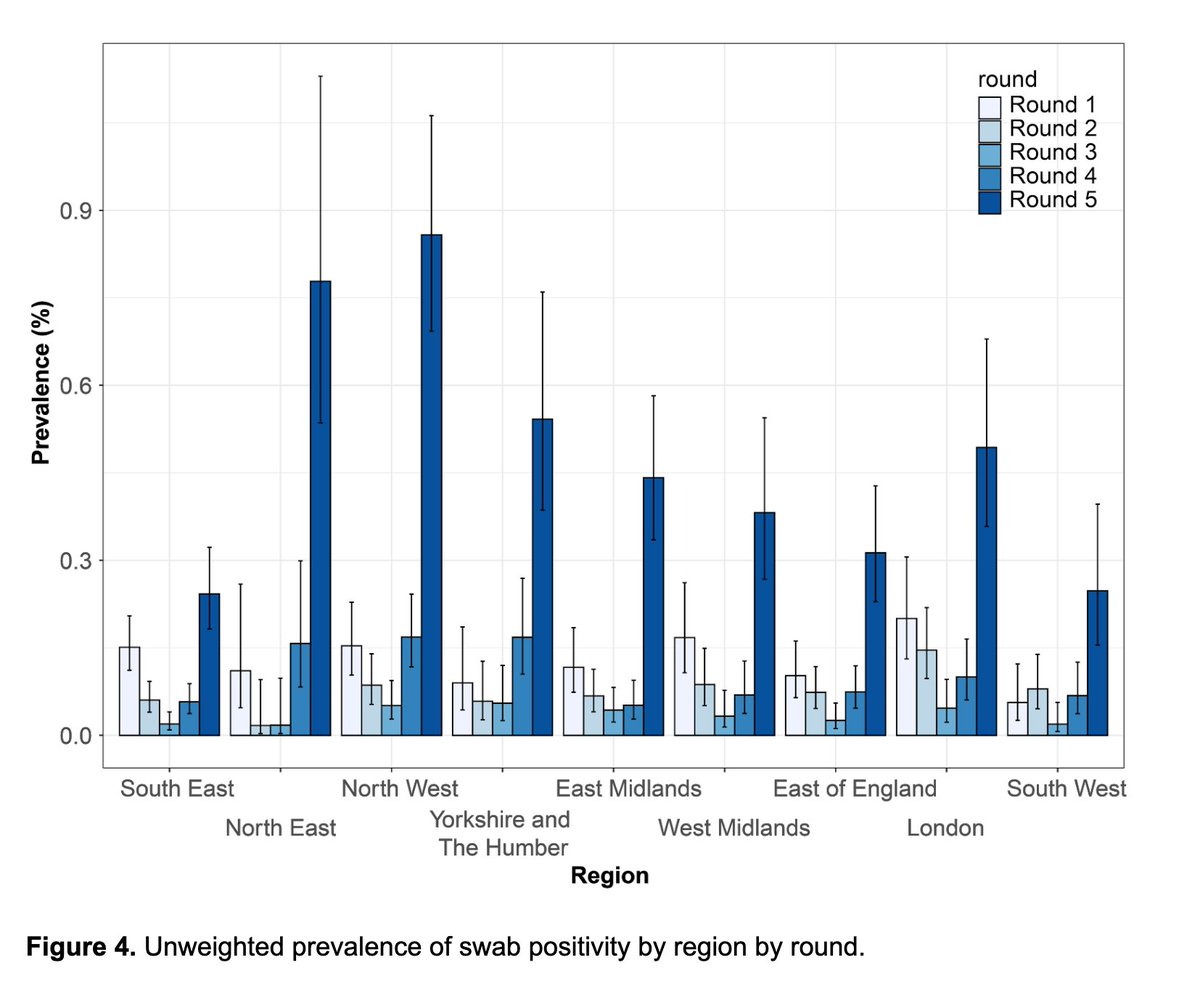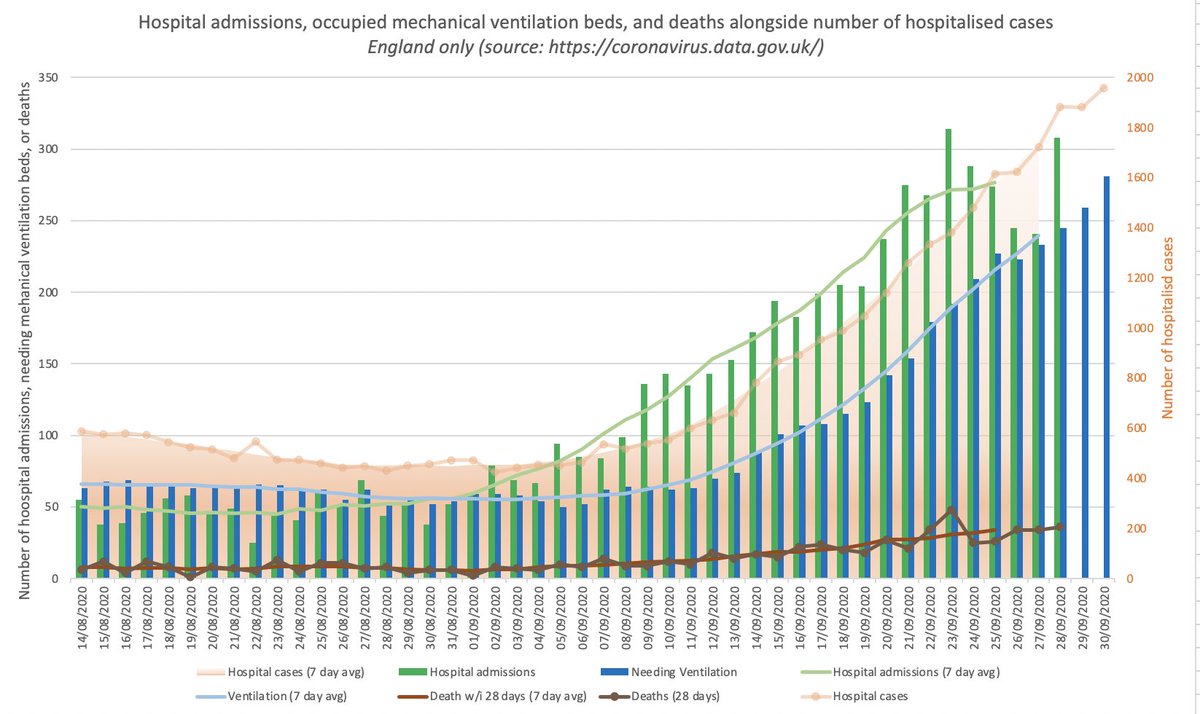REACT-1 study results - data to 26th Sept. Some context.
1 in 200 in Eng infected (far more than ONS survey to 19th Sept, which estimates 1 in 500)
R number lower-now 1.1, doubling time longer-now 10.6 days, BUT rise in number infected is substantial.
https://www.imperial.ac.uk/news/205473/latest-react-findings-show-high-number/">https://www.imperial.ac.uk/news/2054...
1 in 200 in Eng infected (far more than ONS survey to 19th Sept, which estimates 1 in 500)
R number lower-now 1.1, doubling time longer-now 10.6 days, BUT rise in number infected is substantial.
https://www.imperial.ac.uk/news/205473/latest-react-findings-show-high-number/">https://www.imperial.ac.uk/news/2054...
Prevalence highest in 18-24y/o (same as ONS)
BUT 7 fold increase in rate over 65y/o.
And BIG regional variation.
This is similar to ONS survey results.
BUT 7 fold increase in rate over 65y/o.
And BIG regional variation.
This is similar to ONS survey results.
So encouraging that R number falling, BUT this will be different in different parts of the country.
Rise in infection rates in older people.
Rates 2x as high in Black & Asian ethnicity vs White
And now 0.55% of population infected=approx 411,000 people (ONS estimate 104,000).
Rise in infection rates in older people.
Rates 2x as high in Black & Asian ethnicity vs White
And now 0.55% of population infected=approx 411,000 people (ONS estimate 104,000).
These high infection rates will lead to hospitalisations and deaths, especially as older people become infected.
The recent slow down increase in hospitalisations nationally is encouraging, but await longer term trend. Plus remember lag between infection https://abs.twimg.com/emoji/v2/... draggable="false" alt="➡️" title="Pfeil nach rechts" aria-label="Emoji: Pfeil nach rechts">hospitalisation
https://abs.twimg.com/emoji/v2/... draggable="false" alt="➡️" title="Pfeil nach rechts" aria-label="Emoji: Pfeil nach rechts">hospitalisation https://abs.twimg.com/emoji/v2/... draggable="false" alt="➡️" title="Pfeil nach rechts" aria-label="Emoji: Pfeil nach rechts">death.
https://abs.twimg.com/emoji/v2/... draggable="false" alt="➡️" title="Pfeil nach rechts" aria-label="Emoji: Pfeil nach rechts">death.
The recent slow down increase in hospitalisations nationally is encouraging, but await longer term trend. Plus remember lag between infection

 Read on Twitter
Read on Twitter




 hospitalisationhttps://abs.twimg.com/emoji/v2/... draggable="false" alt="➡️" title="Pfeil nach rechts" aria-label="Emoji: Pfeil nach rechts">death." title="These high infection rates will lead to hospitalisations and deaths, especially as older people become infected.The recent slow down increase in hospitalisations nationally is encouraging, but await longer term trend. Plus remember lag between infectionhttps://abs.twimg.com/emoji/v2/... draggable="false" alt="➡️" title="Pfeil nach rechts" aria-label="Emoji: Pfeil nach rechts">hospitalisationhttps://abs.twimg.com/emoji/v2/... draggable="false" alt="➡️" title="Pfeil nach rechts" aria-label="Emoji: Pfeil nach rechts">death." class="img-responsive" style="max-width:100%;"/>
hospitalisationhttps://abs.twimg.com/emoji/v2/... draggable="false" alt="➡️" title="Pfeil nach rechts" aria-label="Emoji: Pfeil nach rechts">death." title="These high infection rates will lead to hospitalisations and deaths, especially as older people become infected.The recent slow down increase in hospitalisations nationally is encouraging, but await longer term trend. Plus remember lag between infectionhttps://abs.twimg.com/emoji/v2/... draggable="false" alt="➡️" title="Pfeil nach rechts" aria-label="Emoji: Pfeil nach rechts">hospitalisationhttps://abs.twimg.com/emoji/v2/... draggable="false" alt="➡️" title="Pfeil nach rechts" aria-label="Emoji: Pfeil nach rechts">death." class="img-responsive" style="max-width:100%;"/>


